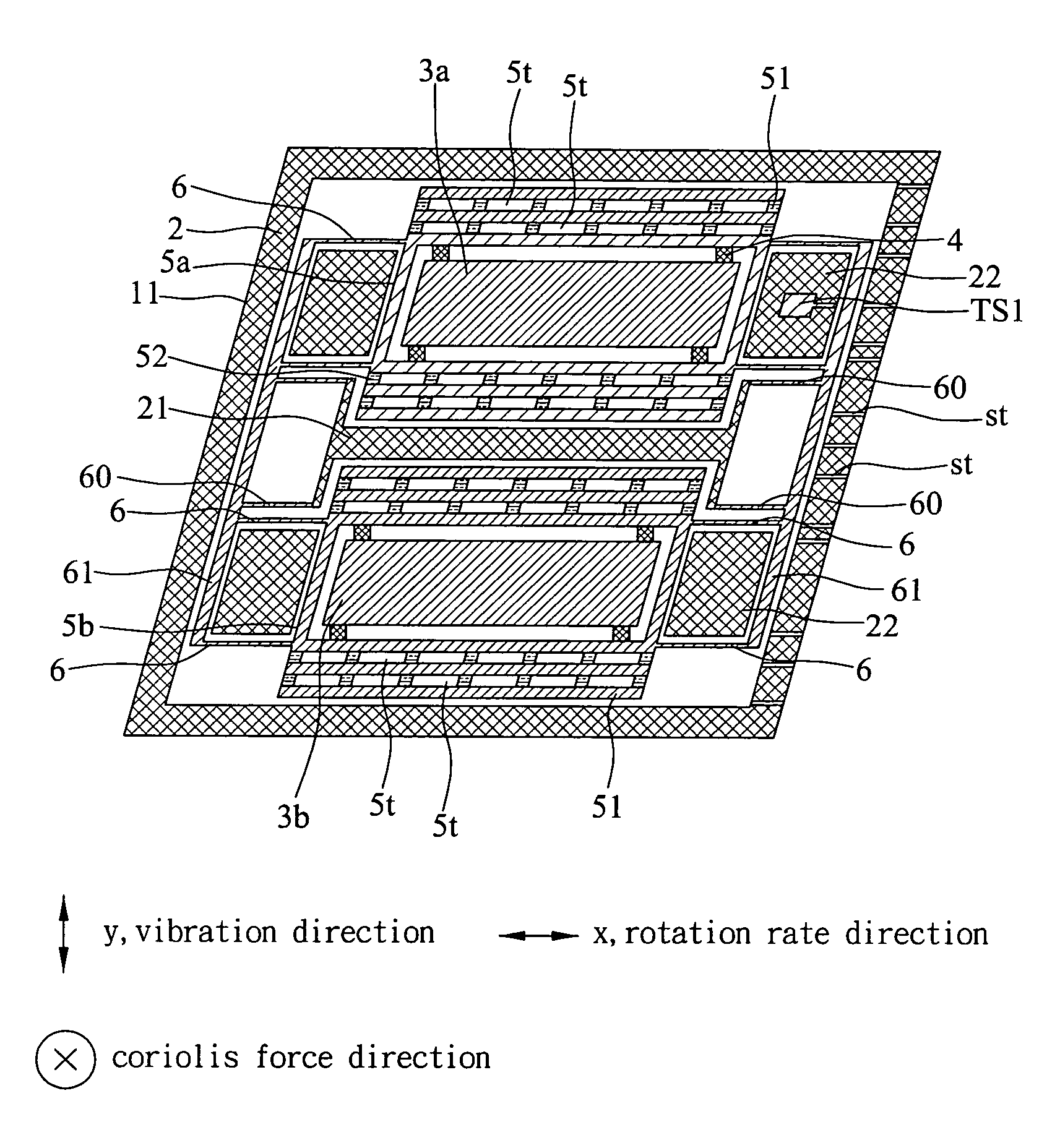Silicon dual inertial sensors
a dual-inertial sensor and silicon technology, applied in the direction of acceleration measurement using interia force, turn-sensitive devices, instruments, etc., can solve the problems of large air damping, difficult to control the width the manufacturing process of the driving beam, etc., to achieve accurate control and reduce air damping
- Summary
- Abstract
- Description
- Claims
- Application Information
AI Technical Summary
Benefits of technology
Problems solved by technology
Method used
Image
Examples
Embodiment Construction
[0016]FIG. 3 shows the top view of a dual inertial sensor in accordance with the present invention. Its structure is made by wet etching a (110) silicon chip 11. It is shaped as a parallelogram, instead of a rectangular shown in FIG. 1. The sides of all the components are in parallel with the intersection line of the (110) silicon chip surface and the silicon lattice {1-1-1} facet or {1-11} facet. Any two sides form an angle of 109.48° or 70.52°; hence most of the components are shaped as parallelograms. Because the two {111} facets, namely {1-1-1} and {1-11}, of the (110) silicon chip are perpendicular to the {110} facet, and conventional KOH and EDP etching solutions etch {111} facet much slower than {100} or {110} facets, a vertical surface can be obtained by keeping the protective mask aligned with the intersection line of the (110) silicon chip surface and the {1-1-1} facet or the {1-11} facet during the etching process. In this embodiment, the structure comprises an outer fram...
PUM
 Login to View More
Login to View More Abstract
Description
Claims
Application Information
 Login to View More
Login to View More - R&D
- Intellectual Property
- Life Sciences
- Materials
- Tech Scout
- Unparalleled Data Quality
- Higher Quality Content
- 60% Fewer Hallucinations
Browse by: Latest US Patents, China's latest patents, Technical Efficacy Thesaurus, Application Domain, Technology Topic, Popular Technical Reports.
© 2025 PatSnap. All rights reserved.Legal|Privacy policy|Modern Slavery Act Transparency Statement|Sitemap|About US| Contact US: help@patsnap.com



